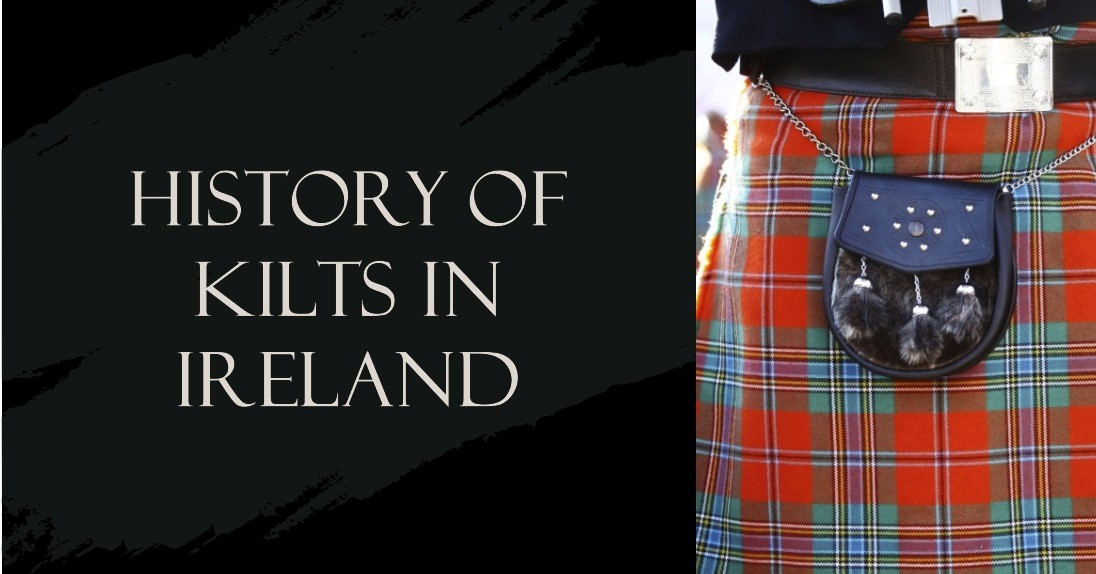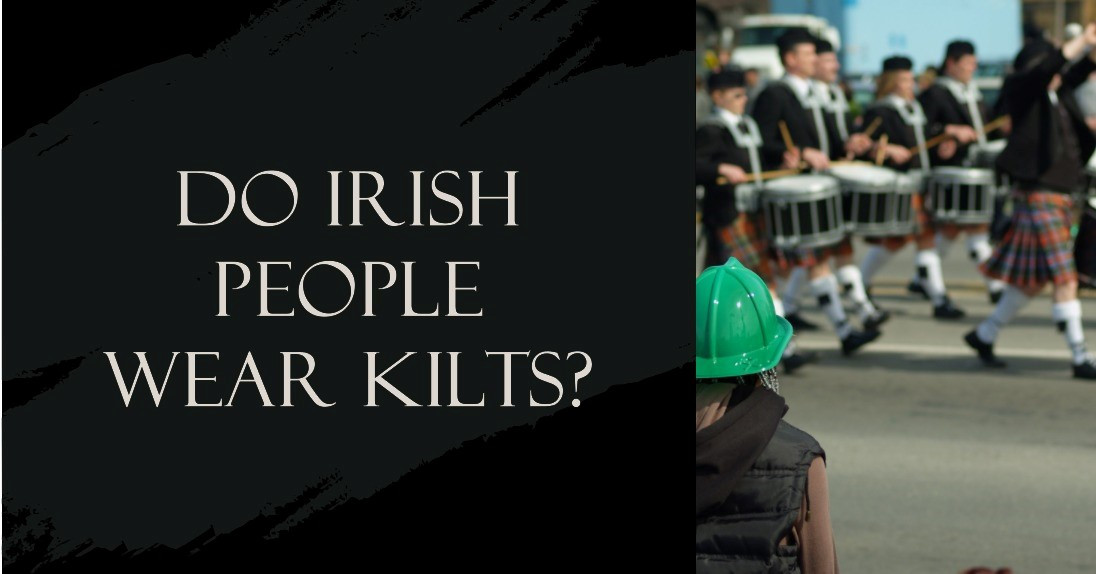Absolutely! It’s a solid YES! The Irish do wear kilts, and it is an integral part of their culture, steeped in history and tradition. The tale of the Irish kilt brings together elements of pride, heritage, and a touch of spirited debate. So, buckle up as we journey through time, unraveling the story of the Irish kilt.
History of Kilts in Ireland

While the exact origins of kilts in Ireland are subject to some disagreement, there is no denying their prominence in Irish culture. The first instances of kilt-wearing in Ireland can be traced back to the mid-1800s, although an ancient Irish kilt unearthed in a farmer’s field was dated back to 1590. In Ireland, a person's kilt is often linked to their county or region, a proud testament to their lineage and heritage.
Unlike Scotland, where thousands of family tartans exist, only a few Irish families, including the Murphy, O’Neil, and Fitzpatrick, have registered kilts. However, each of the four Irish provinces, Connacht, Leinster, Munster, and Ulster, boasts a designated tartan, proudly worn by its denizens. If you come across a man from Cork putting the Cork Tartan, you'll understand why!
Although Scottish kilts can be traced back to the 1600s, it wasn't until the early 1900s that kilts became synonymous with Gaelic heritage. The Irish kilt, similar in style and appearance to a Scottish kilt, is traditionally saffron, a deep, rich yellow color. They often bear the imprint of a shamrock, a national symbol of Ireland, and were first worn en masse by Irish regiments fighting with the British army in the 1900s.
Kilts in Irish Festivals and Celebrations
Beyond the battlefield, kilts also found their place in celebrations, music festivals, and political gatherings. They were also an important part of Irish dance costumes, lending a unique flair to performances. The Irish patriot and fighter, Patrick Pierce, underscored the significance of kilts by making them a standard uniform in St. Enda’s, the dance school he founded in 1910. This era, known as the Gaelic Revival, saw the first kilts in a striking blue hue, associated with St. Patrick.
Misconceptions About Kilts and Irish Culture
Kilts are so entrenched in Irish culture that they have given rise to some interesting misconceptions. For instance, the question of what Irish men wear underneath their kilts has often been a topic of playful debate. The answer? Just like in Scotland, Scotsmen typically opt to wear nothing underneath their kilts. On the other hand, the Irish have a custom of wearing a kind of shorts known as a leine or léine, often fashioned from linen.
The Scottish and Irish Kilt Confusion
While both Irish and Scottish kilts share Celtic roots, they have distinct identities. One key difference lies in the tartan patterns. Scotland has a plethora of clan-specific tartans, while Ireland traditionally had a handful of tartans tied to specific provinces. Over time, however, Irish tartans have gained in popularity. Since the late 1990s, counties in Ireland have been awarded their own tartans. Unofficial, yet widely embraced, these tartans have become popular choices for weddings and Irish events, a way to showcase one's Irish roots and pride.
Where to Buy an Irish Kilt?
Today, Irish-themed kilts and other traditional Irish garments can be found in a variety of stores, including specialized kilt and kilts stores. These stores offer a range of men's kilt fashions, including popular Irish tartans from Dublin County, Cork County, and Kerry County. we even offer traditional hand-stitched kilts in a wide array of Irish county tartans, made from 100% wool.
In addition to the traditional Celtic kilts, these stores also offer a variety of Irish festival attire and Irish pride clothing, such as kilted skirts, bagpipes, and other Irish heritage fashion items. These items make a great addition to any wardrobe, whether you're preparing for an upcoming Irish festival, a wedding, or simply wanting to show your Irish pride.
Conclusion
In conclusion, the Irish kilt is a vibrant and versatile symbol of Irish heritage, steeped in history, culture, and a dash of mystery. Whether it's the saffron-colored kilts of the early 1900s or the county-specific tartans of today, the kilt remains a powerful symbol of Irish identity, a testimony to the resilience and pride of the Irish people.
So, whether you're Irish by birth or by heart, putting on an Irish kilt is an exciting and meaningful way to celebrate and honor Ireland's rich cultural heritage. As we’ve discovered, the world of Irish kilts is much more than a style statement—it’s narrative of pride, tradition, and cultural identity. So, why not be a part of this vibrant tradition? Explore the various designs, colors, and patterns available, and make your own statement with an Irish kilt!












